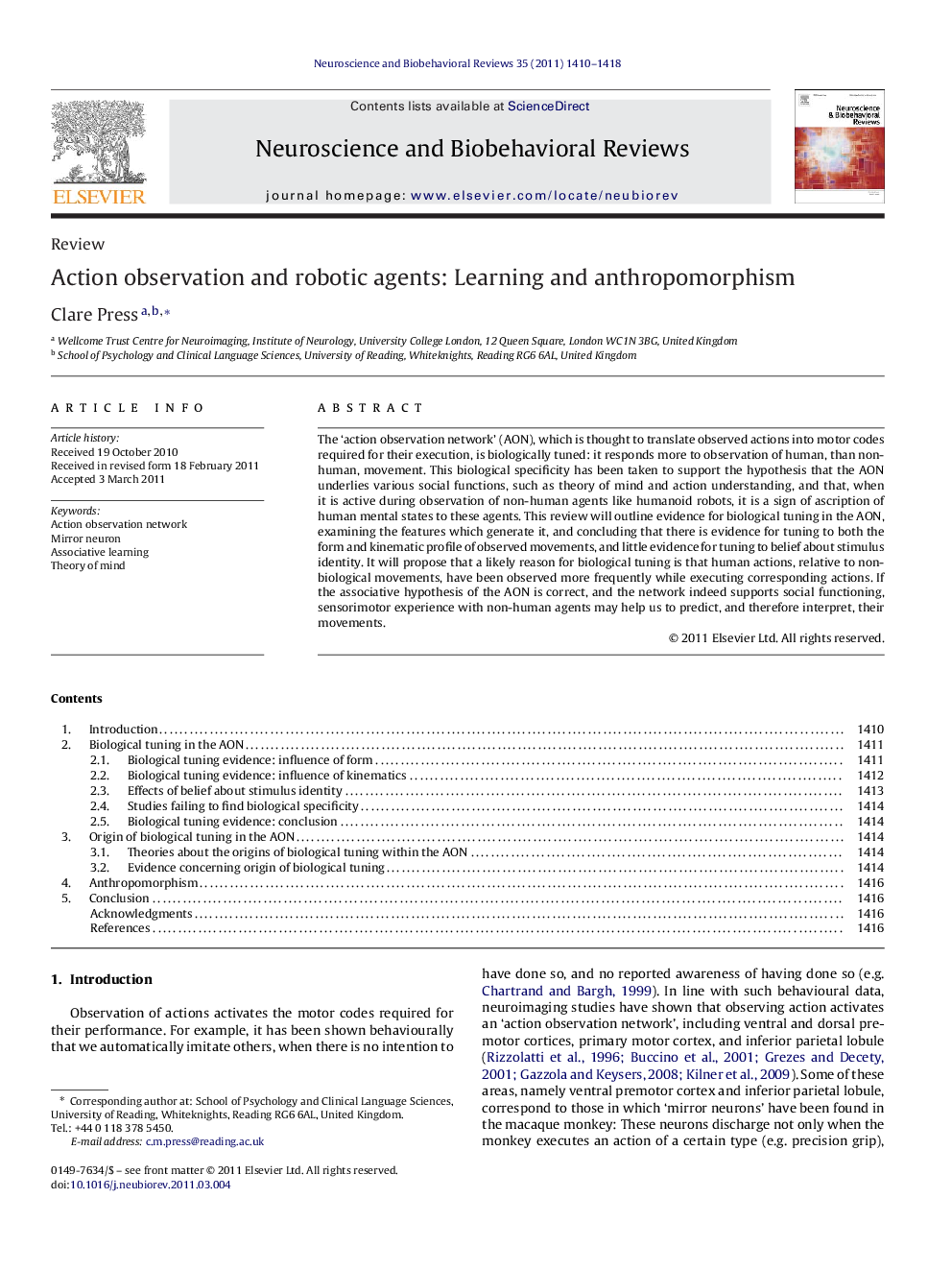| کد مقاله | کد نشریه | سال انتشار | مقاله انگلیسی | نسخه تمام متن |
|---|---|---|---|---|
| 937924 | 924556 | 2011 | 9 صفحه PDF | دانلود رایگان |

The ‘action observation network’ (AON), which is thought to translate observed actions into motor codes required for their execution, is biologically tuned: it responds more to observation of human, than non-human, movement. This biological specificity has been taken to support the hypothesis that the AON underlies various social functions, such as theory of mind and action understanding, and that, when it is active during observation of non-human agents like humanoid robots, it is a sign of ascription of human mental states to these agents. This review will outline evidence for biological tuning in the AON, examining the features which generate it, and concluding that there is evidence for tuning to both the form and kinematic profile of observed movements, and little evidence for tuning to belief about stimulus identity. It will propose that a likely reason for biological tuning is that human actions, relative to non-biological movements, have been observed more frequently while executing corresponding actions. If the associative hypothesis of the AON is correct, and the network indeed supports social functioning, sensorimotor experience with non-human agents may help us to predict, and therefore interpret, their movements.
► The ‘action observation network’ responds more to human than non-human movement.
► Stimulus form and kinematics influence tuning, but not knowledge about identity.
► Associative learning is likely to explain the origins of the biological tuning.
► Sensorimotor experience with robots may help us to predict their movements.
Journal: Neuroscience & Biobehavioral Reviews - Volume 35, Issue 6, May 2011, Pages 1410–1418